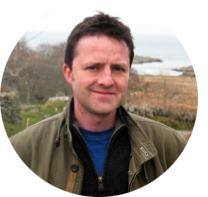BBC Countryfile Magazine spoke to the chairman of Purdey, James Horne, about this year's winners and his thoughts on shooting and its role in wildlife conservation in the UK countryside.
Who won this year’s award and why are they so special?
This year’s winner is Edward Bromet and the Bingley, Burley and Ilkley Partnership for their work to improve Ilkley Moor in Yorkshire, which involved rebuilding the population of red grouse from just a handful of breeding pairs.
The team’s work centred around pest control, careful estate management and a close engagement with the walkers, runners and mountain bikers who use the moor daily, which is everything a brilliant conservation project should do.
How does shooting contribute to wildlife biodiversity?
For over two centuries the countryside has had large swathes laid out for shooting, and the work that goes into improving and growing the mix of wildlife goes hand in hand with the successful running of a top class shoot.
The work that goes into providing game cover and the feeding effort that supports the birds all helps to build a thriving wildlife. The English partridge stocks owe a great deal to the work done to provide headlands and widen field margins, and shooting plays a central role in these programmes.
Can our readers/members of the public access these special areas outside of the shooting season (or inside the season, even)?
Of course they can, the countryside is for everyone to enjoy and our panel of judges always considers the efforts to make areas available for all to enjoy. The public has a right to the bridleways and footpaths that have existed for hundreds of years, although everyone has a responsibility to ensure that the wildlife is respected. For example, and nesting birds are left undisturbed.
Can shooting work more closely with other conservation bodies for a better overall outcome for the British countryside?
What the countryside needs is a forum where common sense and reason ensures that the best decisions are made from the best information available. A number of bodies work together already, with around 17 groups, including The Game & Wildlife Conservation Trust, The British Association for Shooting and Conservation, The National Gamekeeper Association, The Countryside Alliance, in open dialogue about what is best for the countryside.
We’ve been reaching out to the RSPB with some success, as there’s always something we can learn to improve the way shooting works to benefit the countryside.
How can shooting improve its image over the issue of raptor persecution?
Shooting has to coexist with all parts of the countryside and it is vital that it is both accountable to, and seen to be accountable to, the law. Lawbreaking must be highlighted and the perpetrators brought to justice. Shooting must work as hard as possible to ensure that the Code of Shooting Practice is followed within the sport and those who do not follow the code made aware that this is unacceptable.
What are your thoughts on the lead shot debate?
I think that this issue is one of the most important and most complex facing shooting today. We’ve seen bans put in place and then repealed in Sweden and Norway due to confusion or misinterpretation of evidence around the issue.
We need to have debate about the future of lead shot in an unemotional manner, drawing on fact and science – rather than knee jerk reaction from either side to ensure the best outcome for the countryside is reached.
That said, it is also vital that shooting remains within the law – no one must use lead shot over wetlands.
Who is the best current author/writer on the subject of shooting and the countryside?
There’s a huge amount of fantastic writing around shooting and the countryside, and a book I go back to time and again is A Plank Bridge by a Pool by Norman Thelwell, who encapsulates the sheer joy that can be drawn from the countryside in his writing. Thelwell's description of the splash of water, the changing light of the seasons or the wildlife of rural Hampshire is vivid and compelling.
Where is your favourite place in UK to explore?
The Hebrides, for its breathtakingly beauty and unimaginably wild landscapes.
Every year I go up to Rum, Eigg and Muck for at least a week to walk, stalk, fish and shoot, and each time I come away more keen to go back. I was so desperate to take a little of these islands home with me I have a print of Sir William Russell Flint’s painting View of Eigg in my office. Sadly, the real thing was way out of my price range but I can look at my copy every day and get excited about my next trip.

